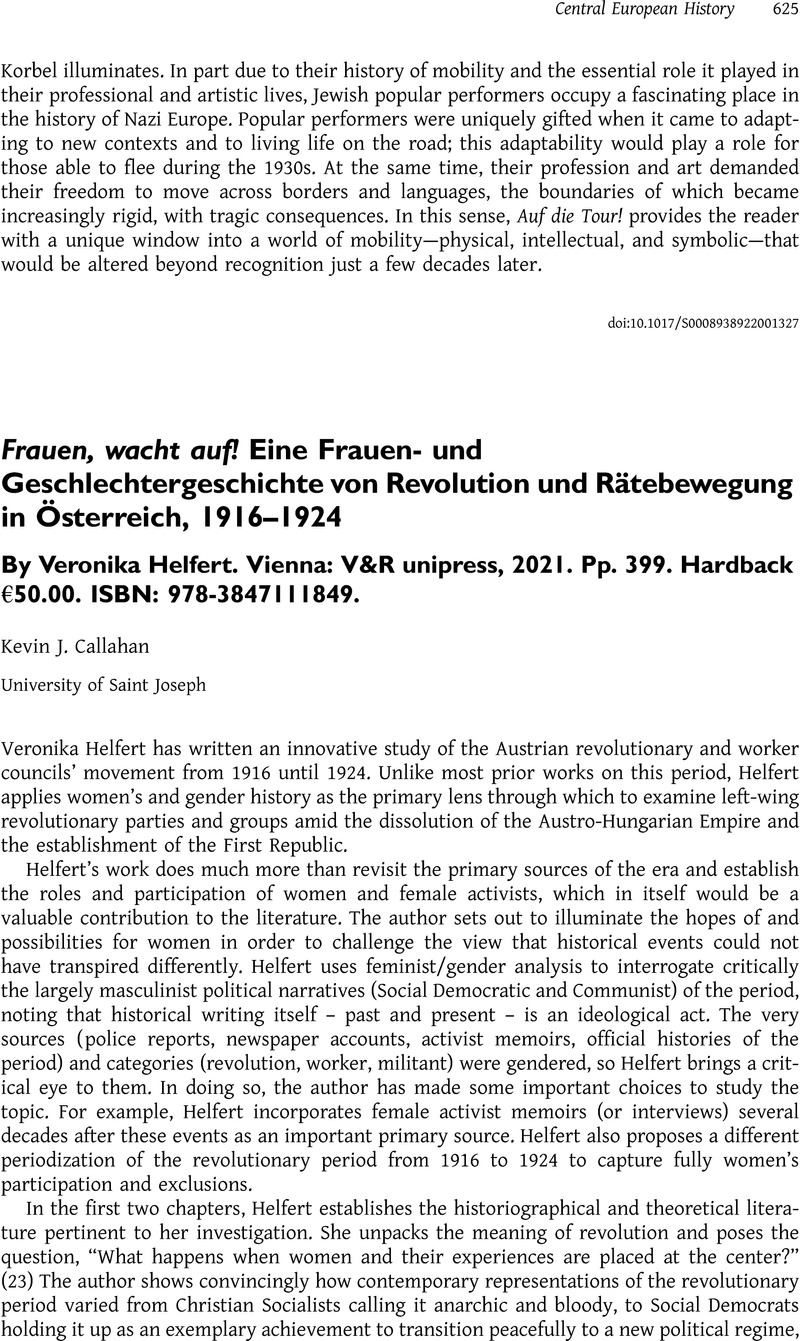No CrossRef data available.
Article contents
Frauen, wacht auf! Eine Frauen- und Geschlechtergeschichte von Revolution und Rätebewegung in Österreich, 1916–1924 By Veronika Helfert. Vienna: V&R unipress, 2021. Pp. 399. Hardback €50.00. ISBN: 978-3847111849.
Review products
Frauen, wacht auf! Eine Frauen- und Geschlechtergeschichte von Revolution und Rätebewegung in Österreich, 1916–1924 By Veronika Helfert. Vienna: V&R unipress, 2021. Pp. 399. Hardback €50.00. ISBN: 978-3847111849.
Published online by Cambridge University Press: 05 January 2023
Abstract
An abstract is not available for this content so a preview has been provided. Please use the Get access link above for information on how to access this content.

- Type
- Book Review
- Information
- Copyright
- Copyright © The Author(s), 2022. Published by Cambridge University Press on behalf of Central European History Society of the American Historical Association


